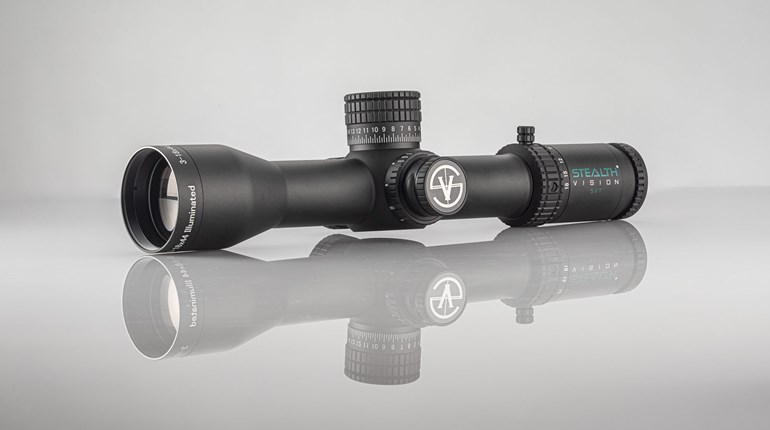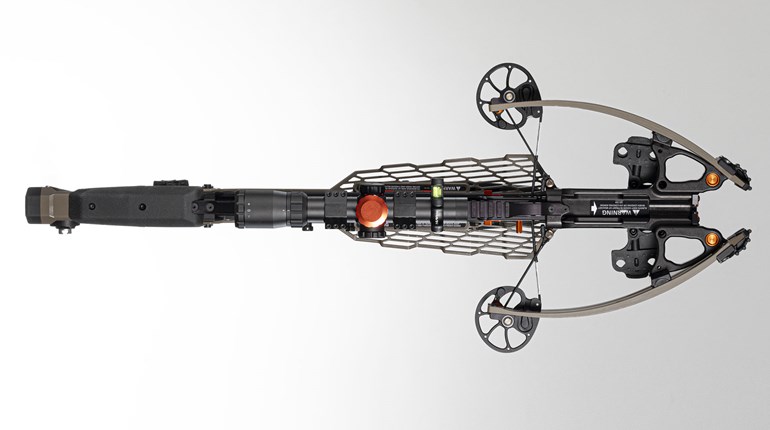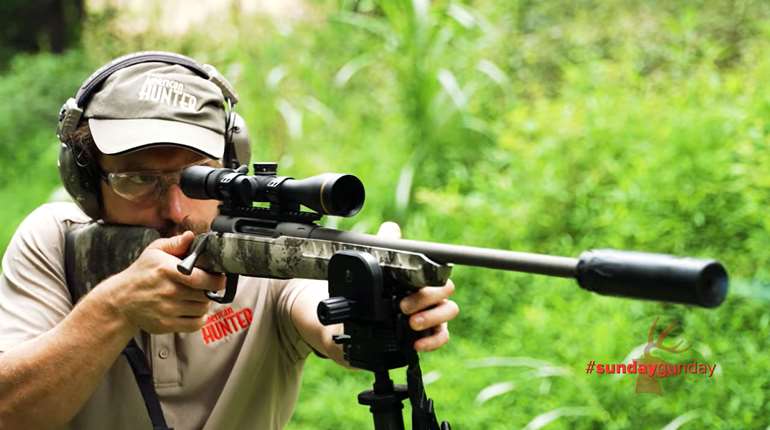
Compound bows are a bit like golf clubs; the most enthusiastic of us may buy new ones every year regardless of the money—if they offer even a slight advantage. But realistically, upgrading your bow every three to five years will offer noticeable advantages the moment you shoot it. Here are six new bows that are undoubtedly better than your old one. And by the way, you shouldn’t buy golf clubs, ever.
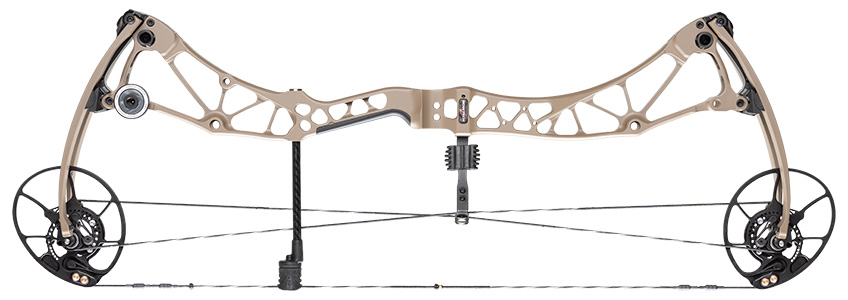
Bowtech Revolt
We’re all different, but I prefer a bow that’s compact so I can stalk with it out West or shoot it from a blind or tree back home. I like it quiet and smooth enough on the draw that it doesn’t try to lurch from my hand when the cams break over. I want a long brace height so it’s easy to shoot; I don’t care so much about speed so long as it’s not plodding. For all these reasons, I love Bowtech’s new Revolt. On paper at least, it might be the perfect hunting bow.
In a nutshell, it’s a 30-inch a2a (axle-to-axle), dual cam bow with a chasm-like 7.25-inch brace height, yet still produces 335 fps IBO. But the real story here is one of the more innovative features on any bow this year, Bowtech’s new DeadLock cam tuning and locking system that allows the cam to be slid back and forth on the axle slightly for a precise tune by way of a simple limb-mounted lock. When it’s tuned perfectly, another set screw can be tightened down so the cam position is locked in on the axle and the bow stays tuned. Look for a full report to come, because if it works, it’s a game-changer for people like me who liken bow tuning to visiting the DMV.
I also love the Revolt’s simple, sleek design and target/hunting hybrid grip that only places a thin piece of rubber between the metal of the riser of the hand. I think it’s the best in the business. In sum, the Revolt has it all, with a price tag to match. MSRP: $1,200; bowtecharchery.com.
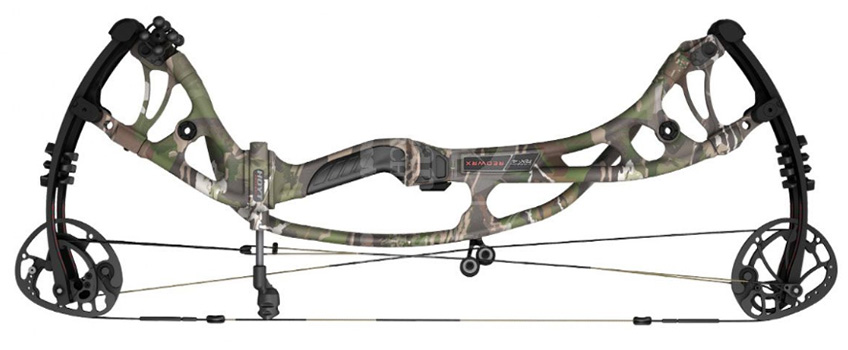
Hoyt Carbon RX-4 Turbo
I’m the type of guy that believes a Cape buffalo may be best suited for hunting with a rifle—and a large one at that—but that’s not to say I don’t admire those savages among us who go after anything and everything with a bow. In the case of the world’s largest, most dangerous game, having the speed and arrow weight to deliver huge amounts of kinetic energy for maximum penetration is key. Hoyt’s Turbo series is made for just that.
The 31-inch a2s Carbon RX-4 Turbo uses Hoyt’s carbon-fiber riser so it’s light, strong and has less lateral flex than aluminum—yet it’s also friendly to the touch and quiet in the bush if you happen to scrape against a mopane tree 25 yards from ole’ black death himself. At this point, it’s all about delivering a powerful arrow to the perfect spot in the bull’s shoulder crease.
In essence, the Turbo cam is Hoyt’s excellent ZT (Zero Torque) Cam that’s been optimized for speed. Combine that, powerful split limbs and a tiny brace height of 5⅞ inches so the powerstroke is as long as possible, and you’ve got a bow the company claims will do 350 IBO. Combined with a log-like arrow, that speed and mass translates to serious energy—and you’ll need it to crack through rib bones like you’ve never seen.
I really love the cam’s simple adjustment system, but what I can’t figure out is why Hoyt doesn't make the RX-4 Turbo in a 75- , 80- or even a 90-pound version for the He-men among us who are dead-set on taking the world’s largest beasts with a stick and a string. Other than that, however, Hoyt’s RX-4 Turbo has it all, and is no doubt one of the most advanced bows in the history of the world. MSRP: $1,749; hoyt.com.
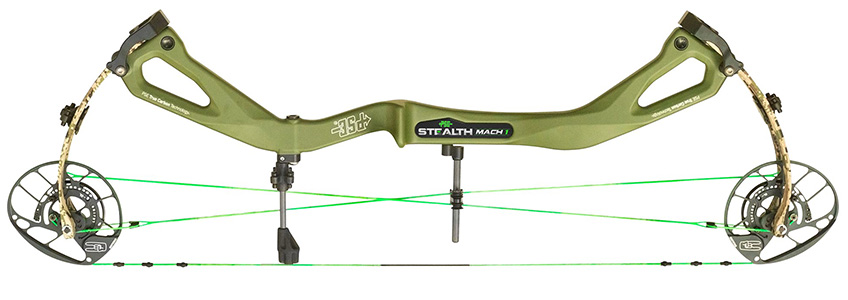
PSE Carbon Air Stealth Mach 1
Remember when I said “one of the most advanced bows in the history of the world”? The reason I said “one” and not “the” is because of this bow, PSE’s Carbon Air Stealth Mach 1. In terms of its carbon fiber riser technology, the Carbon Air Stealth is even a little more advanced. That doesn’t necessarily mean it’s better, but PSE’s version is made in the USA, entirely of carbon fiber and has very few aluminum parts. In fact, it’s almost mind-foolingly light when you pick it up(mass weight= 3.5 lbs.), yet it remains quiet and warmer to the touch in the woods. Fact is, if you would have stumbled across this bow 20 years ago, you’d swear it was left here by aliens. It’s only negative? I don’t like its somewhat blocky grip, but I can look past that and focus on its other features.
It utilizes PSE’s several-year-old Evolve cam, which ironically, hasn’t evolved much, because it hasn’t had to. I’m sure some internet archery nerds will fight me on this, but in my opinion, it’s the greatest cam ever engineered because it’s silly fast, surprisingly smooth during the draw cycle, yet it’s simple and a cinch to adjust for draw length. Most incredibly, it features 80 or 90 percent let off. And if you want to talk about a mind trick, pull a 90-percent let-off bow for the first time and hold it. It almost feels like the string is holding itself back and won’t go off! After some practice—and good technique to make sure you’re not torqueing the bow—90-percent let-off can be a huge advantage when you’re fully drawn on a whitetail that can’t quite make up its mind to turn broadside.
Other than the space-aged riser and best-ever cam system, the Carbon Air Stealth Mach 1 is really a simple bow—just one that weighs a mere 3.5 pounds, goes 332 (IBO) with a decently long 6⅛ brace height and costs only … wait, did I say “only”? Well, there had to be a downside. MSRP: $1,599.99; psearchery.com.
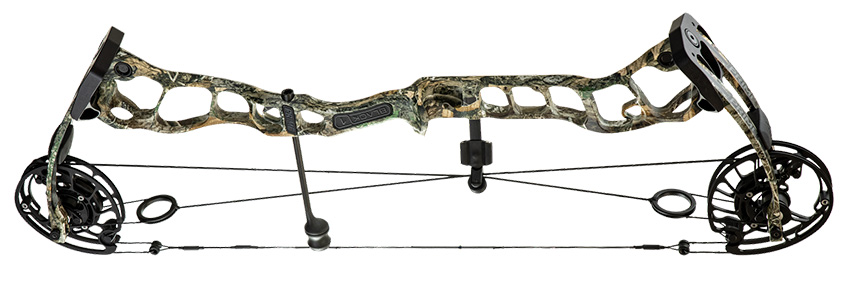
Prime Black 1
Prime is a brand made by Michigan machining giant G5, and what that company does well is make precision metal parts. That translates into bows that are very well made. What I mean is, you won’t find any squeaky bearings or loose tolerances between parts on a Prime. And precision parts and construction translates to accuracy.
The company’s new Black 1 is the shortest bow in the series of four bows ranging from 31 inches long to 39. All four utilize the parallel cam technology Prime has hung its hat on for years now. The parallel cams mitigate cam lean which can rob accuracy. Target shooters tend to love Prime for this reason. However, for hunters who may not have constant access to a bow technician, one of the complaints was that this cam was non-adjustable for draw length.
New for 2020, Prime unveils its ROTO cam technology that allows easy adjustments in half-inch increments without the need for a bow press. While this isn’t new technology, it’s new to Prime, and a big deal for those shooters who love the unmistakable feel of the company’s bows but perhaps just didn’t fit it perfectly. Additionally, the bow now comes with shims to tune the otherwise rigid cams because—as Prime says in its literature—all shooters are a little different and shoot with various styles. The shims account for this fact.
The Black 1 still features Prime’s CenterGrip technology touted to balance the bow in the hand for less wobble on target. Make no mistake, however, this stiff-feeling bow with a 7-inch brace and the back wall of an anvil is largely a target bow that’s been compacted for hunters, and that’s what many folks like about it. MSRP: $1,099; g5prime.com.
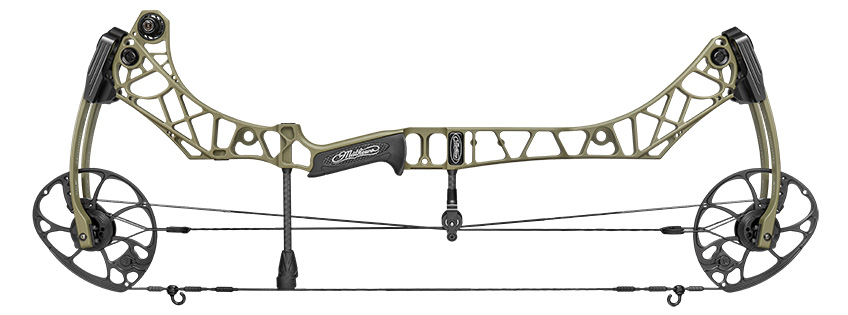
Mathews VXR
Perennial archery powerhouse Mathews didn’t get on top by producing junk. All of the Mathews models I’ve ever shot—and that’s a bunch—are pure hunting bows, featuring the smoothest draw on the market while also being one of the quietest. Each year the company drops a new bow baby, and collectively the archery world and writers like me exclaim: “Oh Look! It’s my favorite Mathews ever!” And it’s always true, because Mathews consistently builds upon its successes and does enough testing and research to never have a failure.
For 2020, Mathews took much of its existing technology in last year’s Vertix and focused in on the bow’s geometry to maximize its efficiencies. It did this mainly by using a 6-bridge riser design that’s touted to be lighter yet stronger than risers of the past, all while slightly changing the orientation of the cams. Or at least that’s what the company claims. And if you believe the numbers (6-inch brace height @344 IBO), it certainly appears that way. Indeed, at 344 fps, Mathew’s latest offspring is no longer in the realm of a plodding little hunting bow, but a speed-child born of a hunting family. Nonetheless, reports I’m hearing are that it’s as quiet as a june bug on a beach. And I don’t doubt it, coming from Mathews.
The VXR’s Crosscentric cams feature Switchweight modules, so you can add 5 pounds to your max draw weight; its robust yet only-4.4-lb. weight and its new damping modules are at least partially responsible for the VXR’s quietness and efficiency.
But while 2020’s VXR is an awesome bow that no doubt would be the envy of the archery world had it spawned a couple years ago, to be frank, I really couldn’t tell all that much difference from it and the excellent Vertix from 2019. Performance aside, however, Mathews stepped up its accessory game by way of the VXR’s SCS Compatible system that links with Mathews’ own pull-up rope and bow sling. So kudos to McPhearson’s finest engineers for thinking outside the box. All in all, the VRX is a wonderful bow, and if you love Mathews, you’re guaranteed to love it. MSRP: $1,099-$1,199; mathewsinc.com.
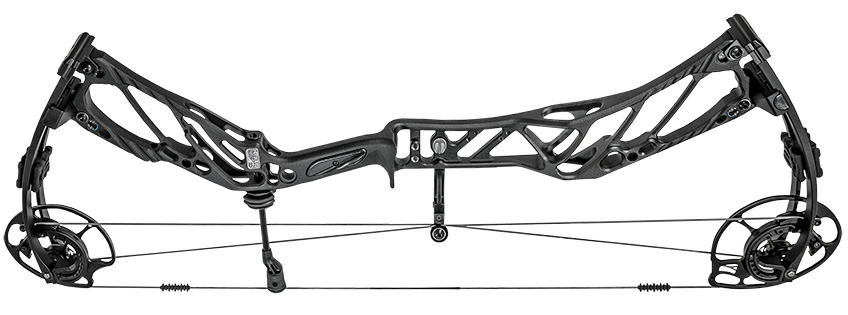
Elite Kure
Perhaps the talk of the ATA Show was the Kure from Elite Archery. A relative newcomer compared to the establishment listed above, Elite has carved out a niche in the industry with its custom-like bows that can be tuned to perfection—and feature custom-like price tags. But if we weren't sure before, the Kure solidifies Elite’s status as a top-tier bow for the masses.
Unquestionably the most versatile bow listed here, the Kure is meant for everyone—teens, women and knuckle-dragging men—thanks to a draw weight that ranges from 40 to 70 pounds and a new ASYM-Tri Track cam featuring interchangeable modules ranging from 23 to 30 inches and all half-sizes in-between. What this means is that the Kure is possibly the best new bow on the market right now for female hunters.
To be sure the Kure isn’t a starter bow meant for the shooter who’s not sure of his or her draw length, or for parents who are worried their budding bowhunter might outgrow a costly new bow—although certainly the Kure would fit that bill—rather, it’s a pristinely machined, 31-inch a2a, dual cam, 7-inch brace height bowhunter’s bow that’s got all the bells and whistles of any bow here. I like that Elite honestly lists the bow’s fps according to its draw length setting rather than its maximum speed. With a 335 fps top-end, it’s impressive in its own right.
Its niftiest new technology is a cam adjustment system that tunes the bow by altering the cam position without having to press the bow and twist yolk cables. The Kure’s SET (simplified, exact tuning) is accomplished by micro-adjusting the limbs at the limb pockets by way of an Allen wrench. It’s quick and easy and I love the fact that the proper turn direction is listed right there on the riser. Finally the bow’s let-off is adjustable from 70- to 90-percent.
Honestly, I’ve never been the biggest Elite fan in the world because I felt its bows were a bit too expensive, a little too heavy, and rather big for me in the woods. However, I’ve never argued about their accuracy, which some say is second to none. But the Kure is just so cool, versatile and reasonably priced that I give the company full props—and a welcome it to Club Mainstream. MSRP: $1,099; elitearchery.com.













